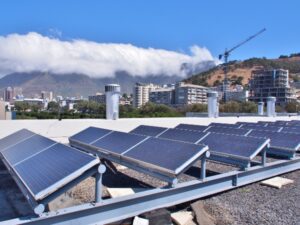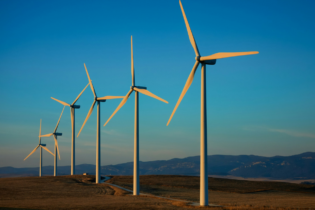While solar panels have a lifespan of several decades, it becomes increasingly important to consider reuse and recycling options as time passes.
South Africa’s prolonged energy crisis has been described as the biggest risk to the country’s economy. Eskom’s failure to meet national energy needs has led to increasingly worse bouts of load-shedding, leaving many South Africans frustrated and angry. In June 2022, President Cyril Ramaphosa announced an energy action plan that outlined measures to address South Africa’s energy crisis. This included a strong push for more households to install rooftop solar panels. The 10-point power crisis plan includes scrapping the licensing threshold of 100 MW, Eskom buying more electricity from existing independent power producers, and doubling the amount of renewable generation capacity procured through REIPPP Bid Window 6. The president’s plan is also designed to enable businesses and households to invest in rooftop solar. To incentivise greater uptake of rooftop solar, Eskom will develop rules and a pricing structure – known as a feed-in tariff – for all commercial and residential installations on its network. This means that those who can and have installed solar panels in their homes or businesses will be able to sell surplus power they don’t need to Eskom. Solar PV waste It is predicted that solar energy via photovoltaic (PV) technologies will contribute to about 15% of the world’s energy mix by 2050. This increase in the use of solar panels is being driven by the reduced capex costs of the technology and the demand for clean energy. With a life expectancy of between 20 and 50 years – meaning that panels installed today will only become waste 20 to 50 years into the future – the predicted exponential increase in the number of solar panels that reach end-of-life (EOL) will require efficient and cost-effective waste management strategies. This is to prevent the dire environmental consequences of simply discarding of these waste panels. Dr Mark Williams-Wynn, manager: R&D at EWaste Africa and research engineer: Thermodynamics Research Unit of the School of Engineering at the University of KwaZulu-Natal, asserts that PV waste is expected to reach 1.4 million tonnes by 2030. This means that, although South Africa is yet to see demand for solar panel recycling, the implementation of the amendment to the National Environmental Management: Waste Act (No. 59 of 2008) – which bans all waste electronic and electrical equipment from landfill as of August 2021 – together with more solar panels reaching EOL, will result in increasing demand for solutions. “At present, between 90% and 95% of solar panels use silicon-based PV cells that convert sunlight into electricity. Other solar panels use thin films of cadmium telluride (CdTe) or copper indium gallium selenide (CIGS) to convert the sunlight to electricity. “These chemicals are highly toxic and make the management of these types of panels extremely hazardous. While silicon-based and thin-film PV are currently the only widespread technologies, there are also several next-generation technologies that will likely become more widespread in the coming years,” said Williams-Wynn during a presentation at WasteCon 2022.Solar panel EOL
The EOL of a panel is often reached because the efficiency of the panel decreases over time. For many major solar energy projects, the guidelines stipulate that the panels must be replaced when the efficiency drops to a certain threshold. The waste panels from such cases remain suitable for less demanding applications. Examples of such applications include the electrification of rural areas and schools. These panels could be sold, donated or leased. Apart from efficiency issues, other solar panels are considered waste due to superficial or partial damages. Many of these can be repaired and can enter the used market. At present, there is no second-hand market for solar panels, and the creation of such a market may assist in reducing the amount of waste produced, while increasing the availability of PV technology. However, in a similar manner to the reuse of lower-efficiency solar panels, thought needs to be given to how the solar panels are recovered for recycling once they are no longer functional. Recycling value chain A solar panel consists of the PV cells housed within a plastic, glass and metal structure. Up to 96% of the mass of a solar panel can be recycled within South Africa, with PV cell alone requiring specialised processing. It’s therefore essential to locally recycle as much of the materials from the solar panels as possible, as this will create jobs, ensure that materials remain within South Africa and reduce shipping costs. As the volumes of solar panels that require recycling increase over time, it may become feasible to begin processing the PV cells themselves in South Africa; however, the current low volumes render this option infeasible. The biggest challenge with dismantling solar panels is the separation of the silicon wafers from the glass protective layer under which they are glued. This can be done either through thermal treatment, chemical treatment or mechanical treatment. The value of the separated silicon is dependent upon the treatment technique used. Undamaged wafers obtained through thermal or chemical treatment have a higher value than those separated by mechanical means; however, the mechanical processes are often cheaper and faster. Despite such a large fraction of a solar panel being recyclable, the recycling of solar panels costs more than can be recovered by selling the recycled materials, due to their low value. Thus, the challenge in encouraging the recycling of PV technology boils down to two questions:- Who will fund it?
- How will these funds be managed?








